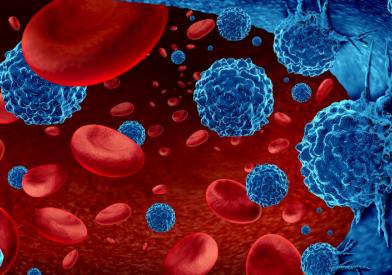What Is Waldenström's Macroglobulinemia?
Waldenström's macroglobulinemia (WM) is an uncommon blood cell cancer that originates from malignant B-cells. It is a slow-growing type of non-Hodgkin lymphoma. Waldenström's mostly forms in the bone marrow and can slow normal blood cell growth, which can lead to anemia and a weakened immune system.
- The disease occurs because of an abnormality in B lymphocytes in the bone marrow, causing them to produce too much immunoglobulin protein (IgM) that thickens the blood.
- Although WM shares similarities with multiple myeloma and indolent lymphoma, it is a form of lymphoplasmacytic lymphoma, a low-grade (or indolent) type of lymphoma.
- Not every patient with WM needs to be treated; some patients benefit from a "watchful waiting" approach.
- While WM is incurable and will return despite treatment, many people are able to lead active lives and may experience years of symptom-free remission after treatment.
Incidence
Waldenström's is uncommon. About 2,000 to 3,000 people are diagnosed each year in the United States.
Growth and Spread
Since WM develops in the bone marrow, it is considered a disease of the whole body. It can also affect the liver, lymph nodes, spleen, and peripheral and central nervous systems.
Risk Factors
- Gender: WM is almost twice as common in men as it is in women,
- Age: The chance of developing Waldenström's increases with age; the mid-60's is the average age at which most patients are diagnosed.
- Ethnic heritage: Up to 20% of WM patients have an Ashkenazi Jewish heritage.
- Family history: Up to 20% of WM patients have a first- or second-degree relative with WM or another lymphoma, multiple myeloma, or chronic lymphocytic leukemia. This suggests there may be a genetic risk factor. We are leading research studies in collaboration with the National Institutes of Health (NIH) to identify the role genetics plays in WM.
Symptoms and Signs
Many patients do not have symptoms when they are diagnosed. For these individuals, WM may be discovered during routine blood or imaging tests. Symptomatic patients may have symptoms due to anemia (tiredness, weakness, dizziness, shortness of breath, headaches) or other deficiencies in blood counts due to the high number of WM cells in the bone marrow, enlarged lymph nodes, or spleen. They may also have symptoms due to the IgM protein made by the WM cells, including neuropathy (numbness, tingling, durning or pain) in the legs and feet or arms and hands; cryoglobulinemia (skin lesions or joint pain); cold agglutinemia (tiredness, weakness, dizziness, sweating, shortness of breath); and rarely, kidney, brain, or spinal cord involvement.
Waldenström's may start with a very early condition, called a precursor condition. Precursors for WM are:
- Smoldering Waldenström's Macroglobulinemia (SWM): In this precursor condition, there are high numbers of abnormal lymphocytes and plasma cells in the bone marrow that secrete M proteins of IgM type. Patients with SWM usually do not have symptoms.
- Monoclonal Gammopathy of Undetermined Significance (MGUS): Abnormal plasma cells are in the bone marrow – but there is no cancer. The abnormal plasma cells produce monoclonal (M) proteins. In some patients, MGUS may later progress to a more serious condition or cancer, such as Waldenström's or multiple myeloma.
Early Detection and Interception
Our colleagues in the Center for Early Detection and Interception of Blood Cancers (formerly the Center for Prevention of Progression), led by Irene Ghobrial, MD, are studying the genetic and epigenetic factors that characterize conditions that are often precancerous to WM, such as smoldering Waldenström's macroglobulinemia and Monoclonal Gammopathy of Undetermined Significance (MGUS). The Center's mission is to understand, at the molecular level, why some patients go on to develop WM disease, while others do not – and to develop targeted therapies to prevent progression, or even eliminate the disease before it leads to symptoms.
PCROWD Study
If you are a patient – or the physician of a patient – with a precursor condition and are willing to have samples of blood and cancer cells collected for our research effort during a medical appointment, or if you would like additional information, please email precursor@partners.org or call 617-582-8664.





